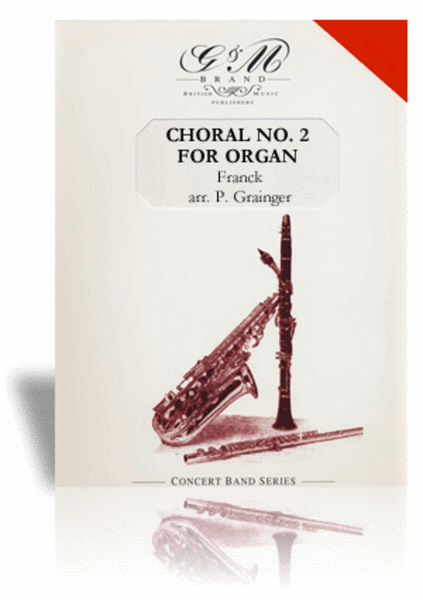Choral No. 2 for Organ
-
Ships in 3 to 4 weeks
Details
Description
SKU: CN.R10039
Composed by Percy Aldridge Grainger. Arranged by Percy Aldridge Grainger. Band Music. Score and parts. Duration 11:00. Published by G & M Brand Music Publishers (CN.R10039).Grainger's passionately humanistic setting of Franck's Chorale No. 2 is uniquely suited to the resources of the modern concert band. He did not want the band to sound like an organ. Instead, he created a rich, voice like sonority similar to the orchestral timbre of the D minor Symphony. It is by far his most ambitious scoring.
At the age of 15, Cesar Franck (1822-1890) traveled from his native Belgium to study organ and composition at the Paris Conservatoire. He remained in Paris for the rest of his life, working as a church organist and teaching piano and organ. In 1872, at the age of 50, he was named professor of organ at the Conservatoire. The same year he composed his popular Panis Angelicus, and as a result became more widely known as a composer. During the last eleven years of his life he wrote most of his compositions including the Symphonic Variations, the Violin Sonata, and the Symphony in D Minor. At a time when French music was often light in character, his was serious and profound. Franck's final and culminating achievement was the Three Chorals for Organ. The completed manuscript was at his fingertips as the priest arrived to administer last rites. The Three Chorals are organized in variation form. They are not as brief as the church chorals of Bach, but rather, extended symphonic compositions. Albert Schweitzer has commented that "the chorale in modern French organ literature means simply a fantasy on a formal, noble theme." The Organ Choral No. 2 fits Schweitzer's description. The music contains references to the D Minor Symphony, Heroic Piece for Organ, and the Violin Sonata, as well as settings of the Christ motive of Franck's The Beatitudes (bar 115 and bar 274). The 2nd Choral opens with a chaconne-style bass theme. The melody passes successively through bass and treble voices leading to a lyrical second subject (bar 65). This new theme develops through a series of interspersed interludes arriving at a grand, virtuosic cadenza (bar 127). The chaconne variations resume, continuing to unfold until the first and second themes are combined (bar 195). More intense and complex variants lead to a powerful final statement of the opening theme (bar 259). The music concludes with a tender and poignant coda based on the "Christ motive." Grainger's setting of the Choral No. 2 was first performed by the Interlochen Band on July 12, 1942. Grainger conducted. It is interesting to note that five years earlier at Interlochen, Grainger had conducted the 1st Franck Organ Choral in a band arrangement by his friend Ralph Leopold. Leopold's arrangement may have been an impetus for Grainger's setting of the 2nd Choral. Quite another factor may have been the composer's apprehension over the onset of World War II. In 1940, Percy and Ella Grainger moved away from their home in White Plains to escape the supposed vulnerability of the New York City area. They chose Springfield, Missouri, presumed safe from enemy air and naval attacks. It is not hard to imaging that he wanted his students to share Franck's healing message of love, hope, reaffirmation, and peace. The Interlochen program cover for the premier features Grainger's picture with the following inscription: a man of genius, force and achievement, renowned and honored throughout the world- who comes to us for the entire season with the sweet simplicity of a true gentleman and the rare patience of the exceptional teacher, with a gigantic intellect projected far beyond our petty problems but with a wide and sympathetic understanding for the lowliest among us. His visit is a privilege we humble hope to merit.

 Share
Share